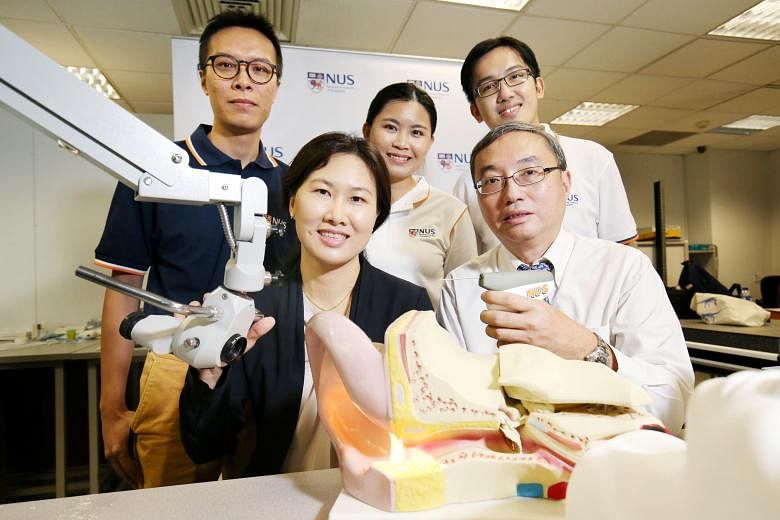Researchers from the National University of Singapore (NUS) have developed a novel handheld device for the treatment of a common ear complaint that could significantly improve current surgical methods.
The researchers said the device, known as CLiKX, is the first of its kind and can shave hours off the previous method, as well as cut up to two-thirds of the cost, based on a ballpark figure of $2,000 to $3,000 for an unsubsidised patient.
The condition, known as Otitis Media with Effusion (OME), also known as "glue ear", affects up to 709 million people worldwide annually. Nine out of 10 are children and in Singapore, about 84,000 children a year suffer from it, said the researchers.
OME refers to a build-up of liquid in the middle ear and has been shown to cause hearing impairment, tumours, brain infections and delays in speech and language learning, if left untreated.
It is usually treated with antibiotics and surgery is used as a last resort.
CLiKX is used to make a microincision in the patient's eardrum to insert a tube that drains the fluid. It takes seconds, compared with the previous surgical method, which is done in an operating theatre and takes between six and eight hours as the patient has to be under general anaesthesia.
The procedure can also be done in a ward or clinic and will need only two to three medical professionals, as opposed to surgery, which can require up to 10, said the researchers.
OME can be caused by a variety of factors but it affects mostly children as their inner ears are still relatively undeveloped, making it difficult for fluid to drain normally.
Weighing only 185g, the battery-operated device fits snugly in the human hand.
The interdisciplinary project is the work of five researchers from the engineering and medical faculties of NUS. It was headed by Associate Professor Tan Kok Kiong from the Department of Electrical and Computer Engineering, and Adjunct Associate Professor Lynne Limfrom NUS Yong Loo Lin School of Medicine's Department of Otolaryngology.
The project started in 2011 and is now entering the trial phase.
The inspiration for the device came to Prof Lim when she was on a humanitarian trip to Vietnam eight years ago.
"I was removing a large tumour from a young child and we were successful but because they did not have general anaesthetic, we could not solve his OME problem."
The team is in talks with collaborators in commercialising the device and hopes to launch the product globally by 2020.


